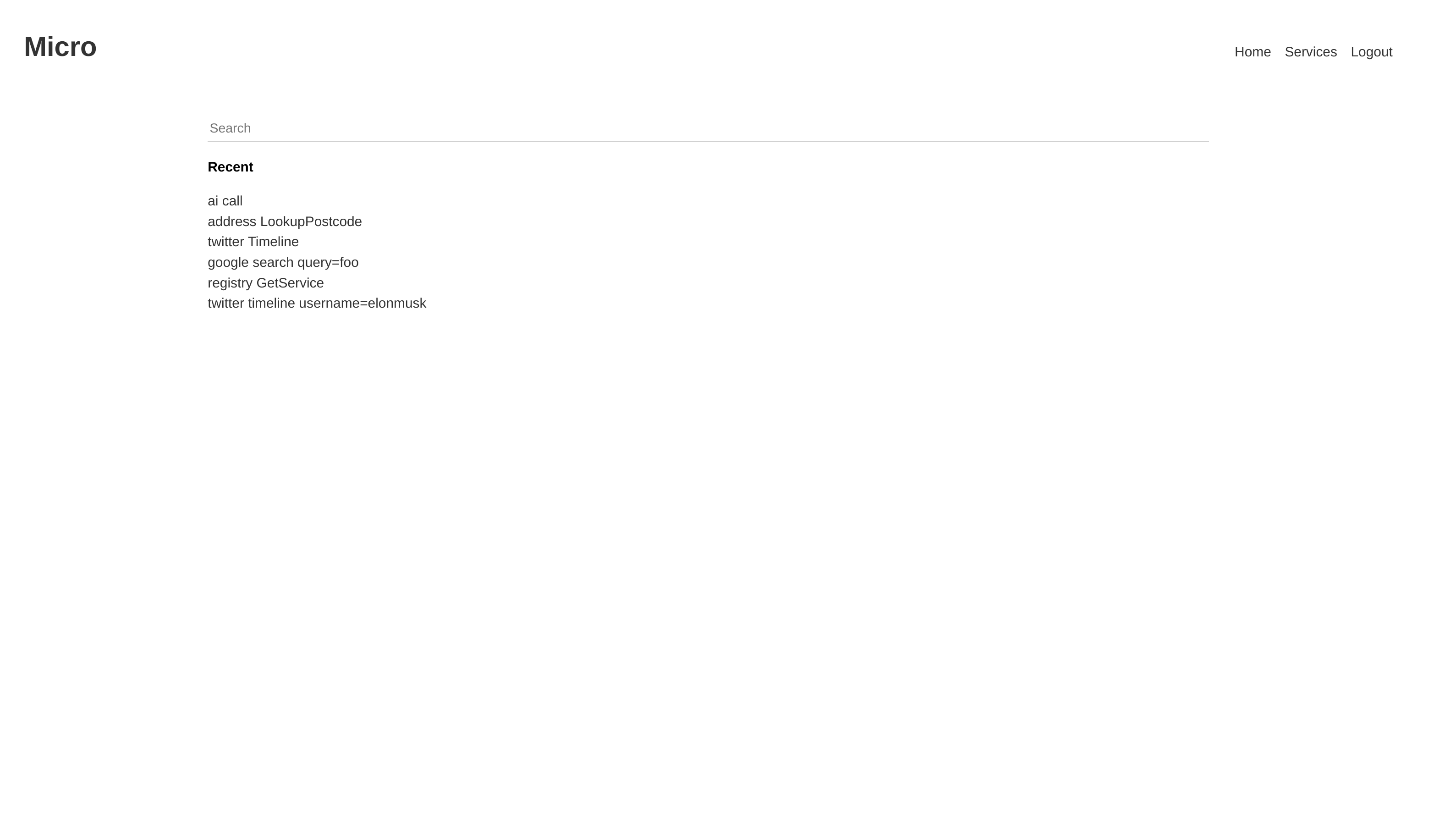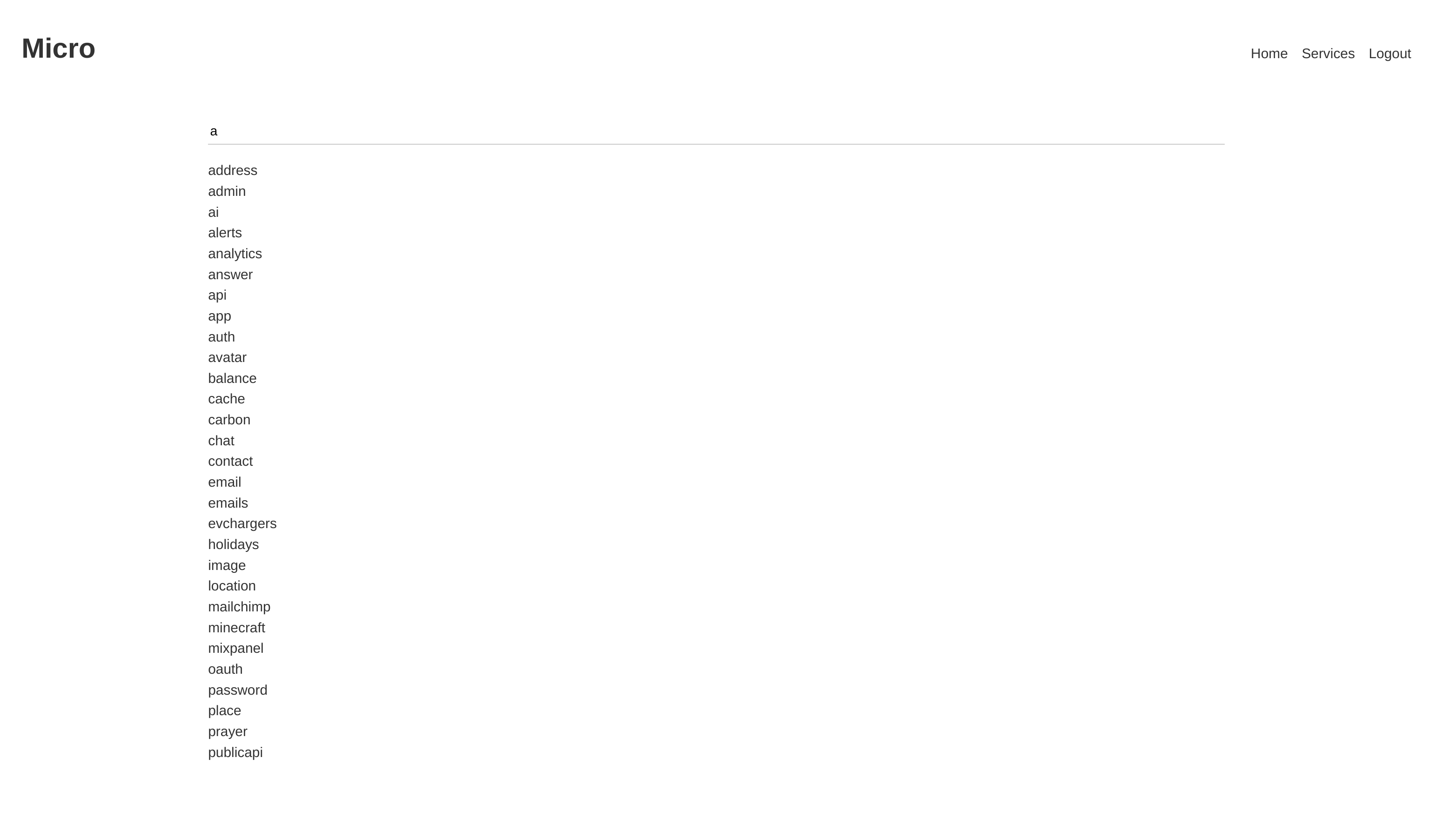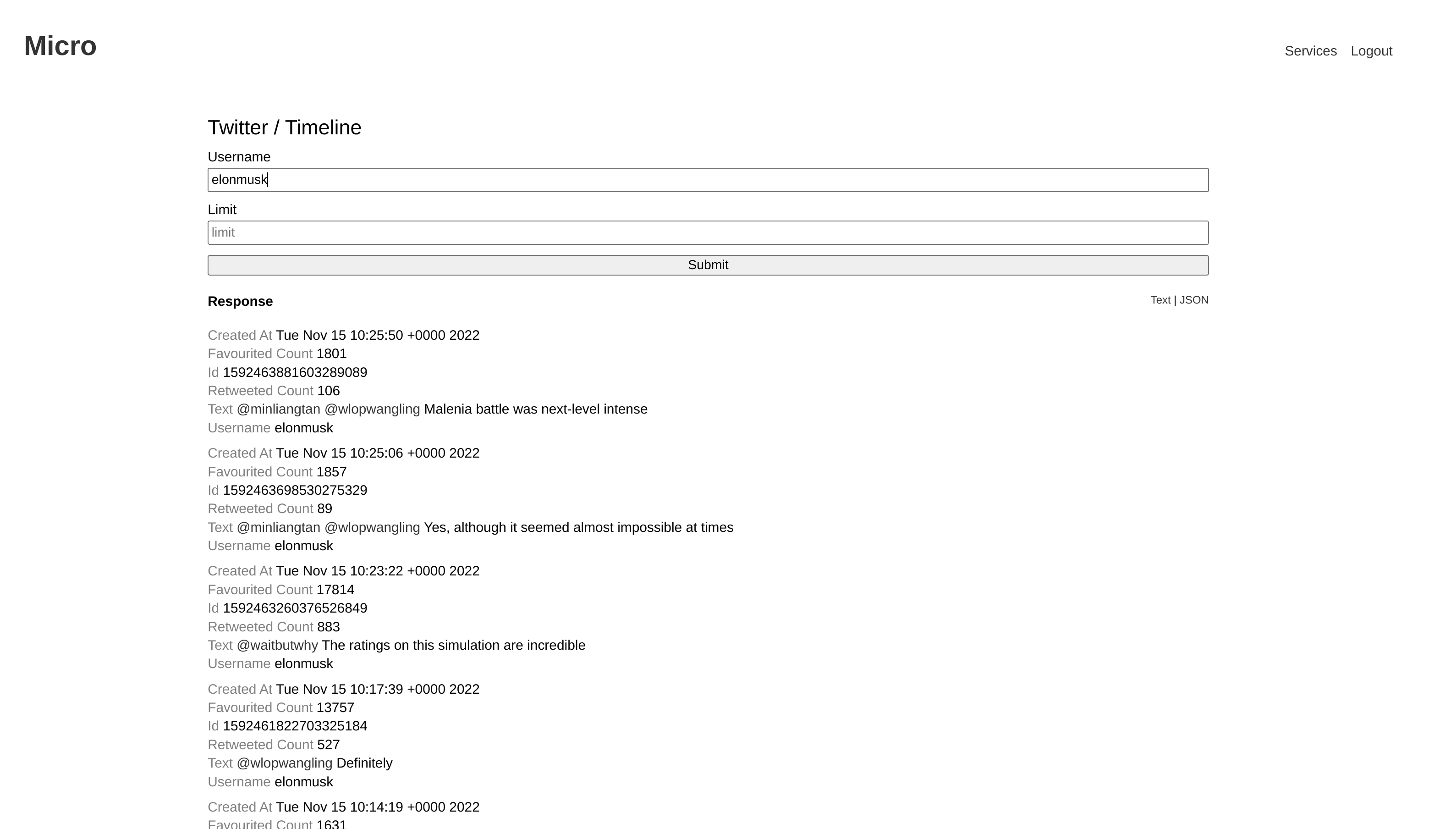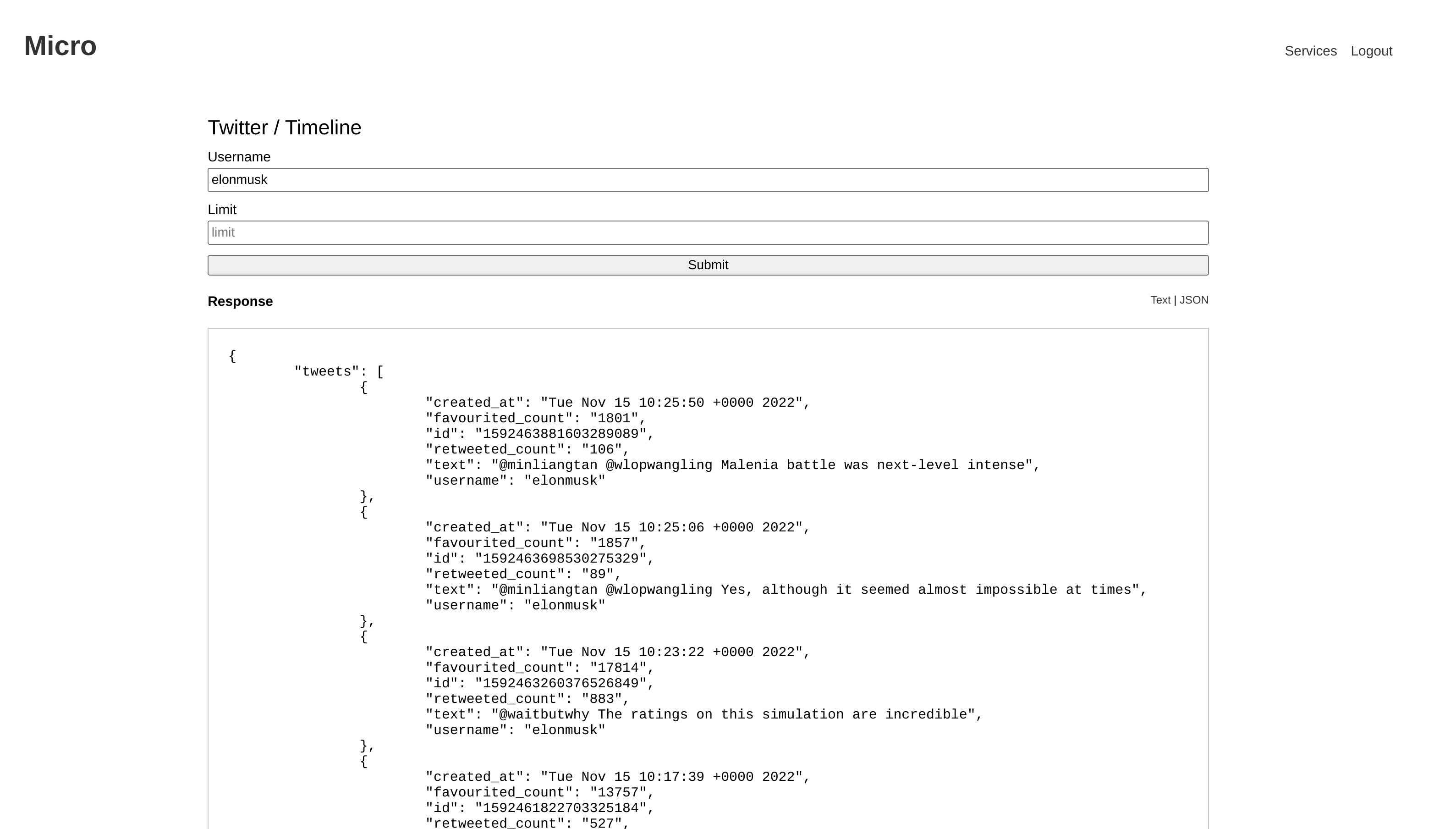Micro
Micro Web Reborn
Micro Web was a dashboard built for querying Micro services in a browser. In v3 we largely sidelined it to focus on a headless server driven by a CLI and consumed via APIs. Today though we’re bringing it back in an all new way. Micro Web is Reborn as a pure JS experience.
Home
The first thing you’ll notice is the Home screen looks pretty sparse. We’ve taken it back to basics to focus on just querying services. Everything relating to admin is done through the CLI, the web is now focused purely on consumption of the services run by Micro.

The home screen
Search
The home screen provides a simple search prompt to find services, it will start to render a list as you type to help find what you need. If you already know what you’re looking for, a query can be made directly in the prompt almost like a command line.

The search prompt
Query
For example if I’m looking to query the Twitter timeline for Elon Musk twitter timeline username=elonmusk will immediately execute the
query and render a result like so. Recent queries are displayed under the prompt for conveniently getting back to them at a later date.

search: twitter timeline username=elonmusk
Format
Each service endpoint is given a dynamically generated form and defaults to a text based output with the option of also rendering JSON.

JSON formatted response
Services
Services are listed on a separate page for convenience as a directory or catalog view. It’s not always clear you know what you’re looking for so seeing the index listing is a useful feature. This will link directly through to endpoints for each service.

The service catalog
Future
The goal for Micro Web is to enable consumption of Micro services through a browser or mobile device. The idea being that we can facilitate immediate access to query the data or execute API endpoints without the need for dev tools like the CLI or client libraries. In future we’ll look to extend this by providing more powerful visualisation via widgets and embedding into external web apps and services.
Find the source on GitHub. Follow us on Twitter for updates.